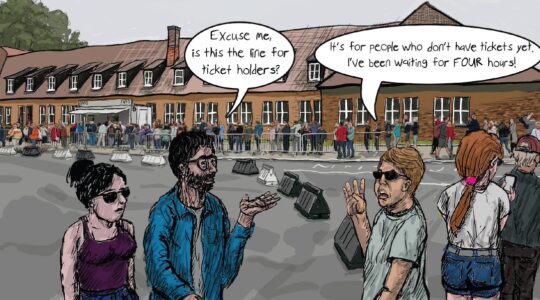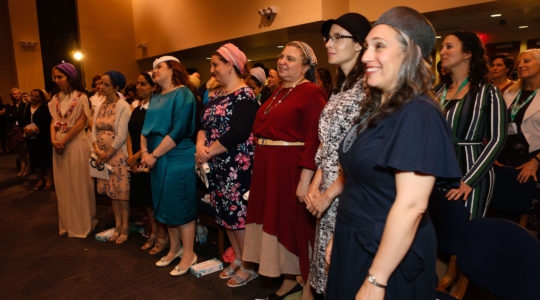(New York Jewish Week via JTA) — For more than a year now, synagogues around the world have managed to continue their activities during the COVID pandemic with Zoom and similar services.
There is, however, a problem.
Zoom Judaism is not working.
What Zoom provides is not real community. At the end of the day, digital fellowship is pyrite, also known as fool’s gold.
Zoom meetings and rooms do not fulfill the fundamental needs of Jewish community, which are very much physical in nature. Judaism is a sensual religion, one that is based on our five senses. To be a Jew means to see other human beings and not just images of heads, to listen to them without the option of a mute button, to feel their embrace, to taste their food at communal meals, and to sense the leathery smell of a Torah scroll or the perfume of a beloved Jewish friend.
Don’t get me wrong, I understand that Zoom Judaism was necessary during the height of the pandemic and will continue to be so for some months. I recognize that Zoom has been a lifesaver for the physically challenged and that it has quickly brought about a revolution in Jewish adult education. My concern is that some Jewish leaders believe that the pandemic has given us license to reimagine a largely digital synagogue as a permanent replacement for real, physical Jewish community. This belief is predicated on the idea that Jews will continue to find Zoom Judaism compelling long after the novel coronavirus is finally vanquished.
Jews will not find Zoom Judaism compelling.
To borrow a term from environmentalism, Zoom Judaism is unsustainable. Life is an in-person affair, and Jewish life is all the more. Zoom Judaism under non-emergency conditions will promote the deification of what has been called the “sacred self,” the notion that our own desires for convenience and comfort take precedence over God’s command to be a kingdom of priests and a holy nation.
Some have suggested that hybrid services are the answer to this danger. Alas, hybrid services are also an unsustainable solution. It is so easy to log in and, relatively speaking, so hard to actually make one’s way to a brick-and-mortar structure, that most Jews will take the path of least resistance if they take any path at all. This path, however, will merely lead us to an atomized hive of like-minded individuals, not a community. It will do to Judaism what Facebook and Instagram have done to friendship.
Sooner or later, we will have to shut off the public streams and force those who value Jewish community to come back to shul and benefit from the real McCoy. Zoom should be used for the benefit of those who cannot attend otherwise, particularly those who are homebound, hospitalized or live very far from any synagogue.
The good news is that we have been here before. When we lost the Beit Hamikdash in Jerusalem nearly two millennia ago, we lost the physical nexus of the Jewish world, one that served as a hardwire connection to the Holy One. We wisely created a new system that made the synagogue, even in those dark days, the physical home of the Jewish community.
In much the same way, we must double down on the power and potential of synagogues and what they provide: a physical community that nothing else, no matter how technologically advanced, can ever replace.
JTA has documented Jewish history in real-time for over a century. Keep our journalism strong by joining us in supporting independent, award-winning reporting.







